Bang Saray: A slice of peace and quiet near the urban sprawl of Pattaya
This scenic, low-key subdistrict in Chonburi province left us rethinking some of our opinions about the Pattaya area. (Island Daze #22)
We stride down a shady beachfront lane and into a fishing village to peep boats with bright orange-and-blue paint jobs. Potted plants sit on stilted porches above the calm sea. As we gaze at the nearby isles and wade into the warm Gulf water, it’s hard to believe that we’d been on the ugly highway out of Pattaya only a few minutes earlier. Fifteen km south of this metropolis, serenity surrounds Bang Saray.
Seeking relief from the urban sprawl
Set on the east side of the upper Gulf of Thailand within an hour’s drive of Bangkok when the traffic is light, Chonburi has never been close to my favorite of Thailand’s coastal provinces. In fact, not counting the wee mud-coast provinces near the Thai capital, I’d have to rank Chonburi last out of all coastal provinces in terms of how enthusiastic I am about visiting at any given time.
Don’t get me wrong; I can see why many people enjoy this heavily populated province with a name that translates as something like “Beautiful Sea City.” As a place to live or for comfy short-term trips, Chonburi has plenty to offer.
Ko Si Chang is worth a visit for history and seafood, and popular Ko Larn remains lovely in places. Undeveloped Navy-controlled islands like Ko Khram Yai and Ko Samae San are fantastic for day trips, while more distant unspoiled islands like Ko Phai, Ko Maniwichai and Ko Chan can be reached by dive boat. Humans aren’t allowed to set foot on many of Chonburi’s islands, a few of which have some of the healthiest and most impressive coral in the upper / eastern Gulf.
Then, of course, there’s Pattaya. Despite its well-earned reputation for seediness, this infamous city is home to many expats who are more attracted to the lengthy beaches, water sports and international dining than the Walking Street red-light district. Family-friendly sites like Sanctuary of Truth and Nong Nooch Gardens make Pattaya a favorite of many Thai tourists as well. When it comes to beaches favored by the Thais, none are livelier on a Saturday than Hat Bang Saen.
But as residents of the Bangkok mega-city, we usually prefer peace and quiet when traveling. If there’s only enough time for a quick beach trip, we tend to cruise down the west coast of the upper Gulf to Prachuap, or to Chanthaburi on the more distant Eastern seaboard. In either direction, we’re automatically soothed upon entering sleepy seaside spots like Sam Roi Yot and Laem Singh.
In contrast, heading straight southeast out of Bangkok takes you through congested Samut Prakan and into the sizable city of Mueang Chonburi, the provincial capital. From there, the urban and industrial sprawl extends right down through Si Racha, Laem Chabang and into Pattaya and Jomtien. Starting in a city and traveling through other cities in order to reach a city, is not our cup of tea.
But after largely ignoring the Pattaya area ever since I’d done some windsurfing at Club Loong Chat in 2007, we decided it was time to give the area another look earlier this year. We didn’t have time to check out any of Chonburi province’s islands on this trip. Instead, we learned that Bang Saray would be a fine spot to relax. This languid, not-so-touristy town ended up exceeding our expectations.
Like Pattaya in the past?
Early settlers of what’s now Bang Saray (also spelt Sare) were pirates who “killed people, seized possessions and burned down ships,” according to the subdistrict administration. Dotted with isolated beaches, the hill-studded coast south of town must have been good booty-stashing terrain. In the early 19th century, descendants of Phraya Chanthaboon, an influential leader from Chanthaburi, took a shine to the area during an extended boat trip. They left some settlers behind.
Pattaya in the early to mid 20th-century is often described as a quiet and obscure fishing town that few people knew about. During the American-Vietnam War in the 1960s and ‘70s, the arrival of US servicemen sparked its transformation into a city with an economy geared towards “Yankee” soldiers on R&R, and then tourism more generally after the war. Now Pattaya ranks as one of Thailand’s most popular destinations for tourists, expats, workers and land developers.
As high-rise hotels sprouted in Pattaya and the wider Chonburi province started servicing cruise ships rather than American warships, the Bang Saray community’s continued focus on fishing kept mass tourism at arm’s length. Tourism has been rolled into the subdistrict’s economy, of course, but it’s relatively subdued and we found many of the tourism-related businesses to be tastefully done.
One thing I appreciate about Bang Saray is how the buildings of Pattaya and Jomtien are in view, as though hovering over the Maya-blue sea to the north. This makes Bang Saray one of the only places in Thailand to soak up vistas of an expansive seaside-cityscape, a la Miami or Gold Coast. The old-style fishing lifestyle set against an urban skyline backdrop makes for some intriguing photography.
Town to beach to village
Driving into Bang Saray from Sukhumvit Road, which is the main highway through the area, reminds me of entering any non-touristy Thai town with narrow lanes looping past markets, street carts and shophouses. A few guesthouses attract travelers seeking a local-oriented experience downtown. Between the shrines and noodle stalls, some of the shops sell swimsuits and pink-flamingo floaty toys.
Still, Bang Saray has such a relaxing vibe compared to Pattaya, whose countless travel agencies and neon-lit pubs are only some 20 km away.
A sea breeze replaces the lived-in feel of downtown at Hat Bang Saray, a three-km beach consisting of light-tan sand rimmed by a stumpy seawall and a two-lane road with lots of shade. We spot a handful of small condos, hotels and beach clubs, but most buildings are single-floor shops and eateries overseeing umbrella-shaded beach chairs for enjoying seafood with Thai beer and a bucket of ice.
As we stroll aimlessly by the beach, a group of three dozen cyclists — both Thais and foreigners — zip by in spandex attire.
Bang Saray’s beach road has a public park and an old Navy boat that’s part of a memorial to Admiral Prince Abhakara Kiartivongse (1880-1923), considered the father of the Royal Thai Navy. Seeing his image here isn’t a surprise given how Bang Saray is the northernmost tambon in Sattahip, a district that hosts headquarters and training grounds of the Royal Thai Navy (RTN) fleet. In fact, the long-standing pradu (padauk) trees that drape over the Bang Saray beach road are a symbol of both the RTN and Chonburi province. To the south, the Navy controls most coastal terrain and all 20 of the islands found between Bang Saray and U-Tapao Airport.
Another eye-catching site on the beach road is a life-size whale shark statue that draws its share of selfie snappers. Real whale sharks are rare in the area, but these docile giants have made occasional appearances in Chonburi waters during the pandemic. The same goes for Bryde’s whales and bottlenose dolphins.
Unlike Sattahip’s other subdistricts, Bang Saray is more famous for fishing than the Naval presence. Beyond the south end of the beach stands a seaside community that’s been here for at least a century, according to a local woman who we chat with while perusing dried squid in an open-fronted shop. It occupies one of the photogenic old houses set along the narrow lane nearest the sea.
Much of the local seafood goes to nearby stilted restaurant kitchens or the fabulous night market downtown. Bang Saray is so well known for seafood that quite a few tourists — especially Thais — schedule dinner trips here during their vacations in Pattaya. As with other fishing hubs that profit from being part of tourism-driven economies, the pandemic has been hard on the fishers of Bang Saray.
In addition to several seafood restaurants, the village hosts a mix of shops, cafes, guesthouses and homestays that range from modern concrete buildings to bed-on-the-floor type places with thin wooden walls. The Boathouse looks like a nifty guesthouse with big windows opening to the sea, while Kept Bang Saray has circular villas and a swimming pool area extending to a pier. Also worth a mention is Bang Saray Beach Club, a British-run restaurant and bar with a pool and a great reputation.
If you’re wondering why I’m not including photos of the local seafood, it’s because we saved our appetite for a cafe further south. It will feature in next week’s article about one of the finest Thai mainland beaches I’ve come across. 🌴
Thanks for reading Thai Island Times, an independent, reader-supported newsletter sharing the beauty, challenges and distinctive identities of Thai islands and coastal areas.

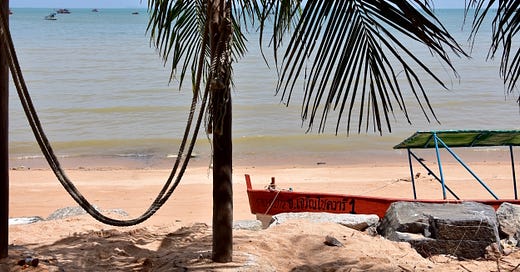



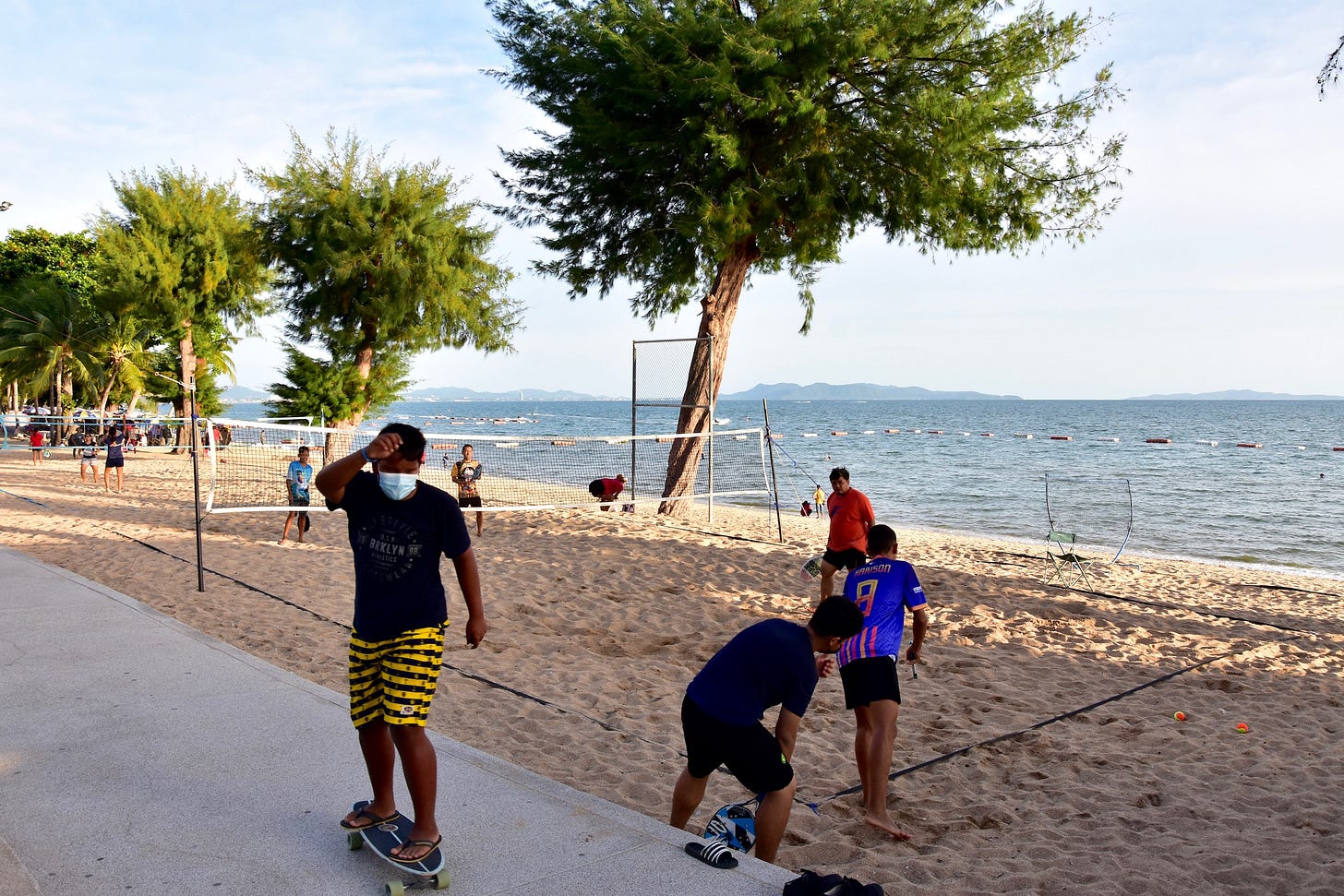
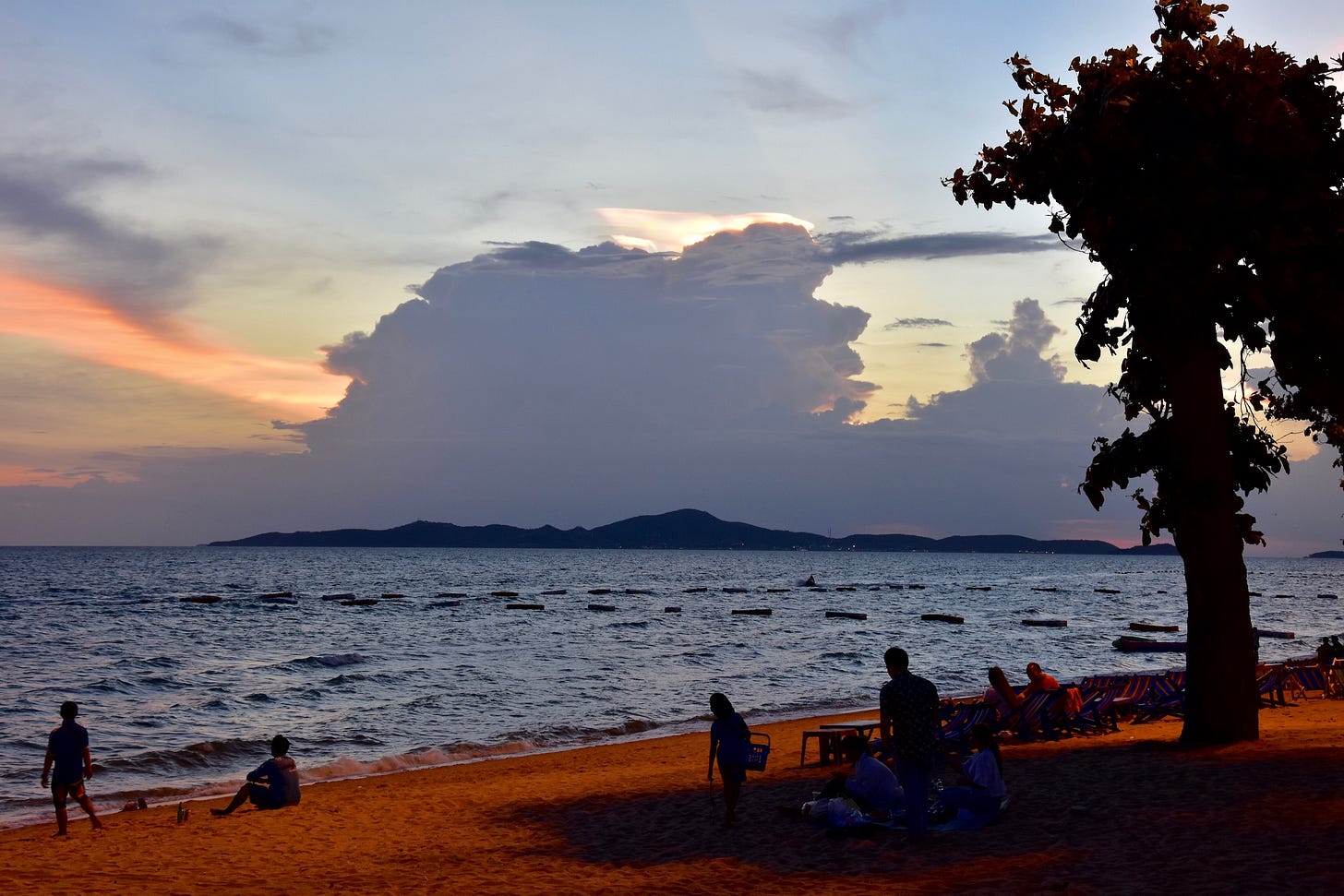

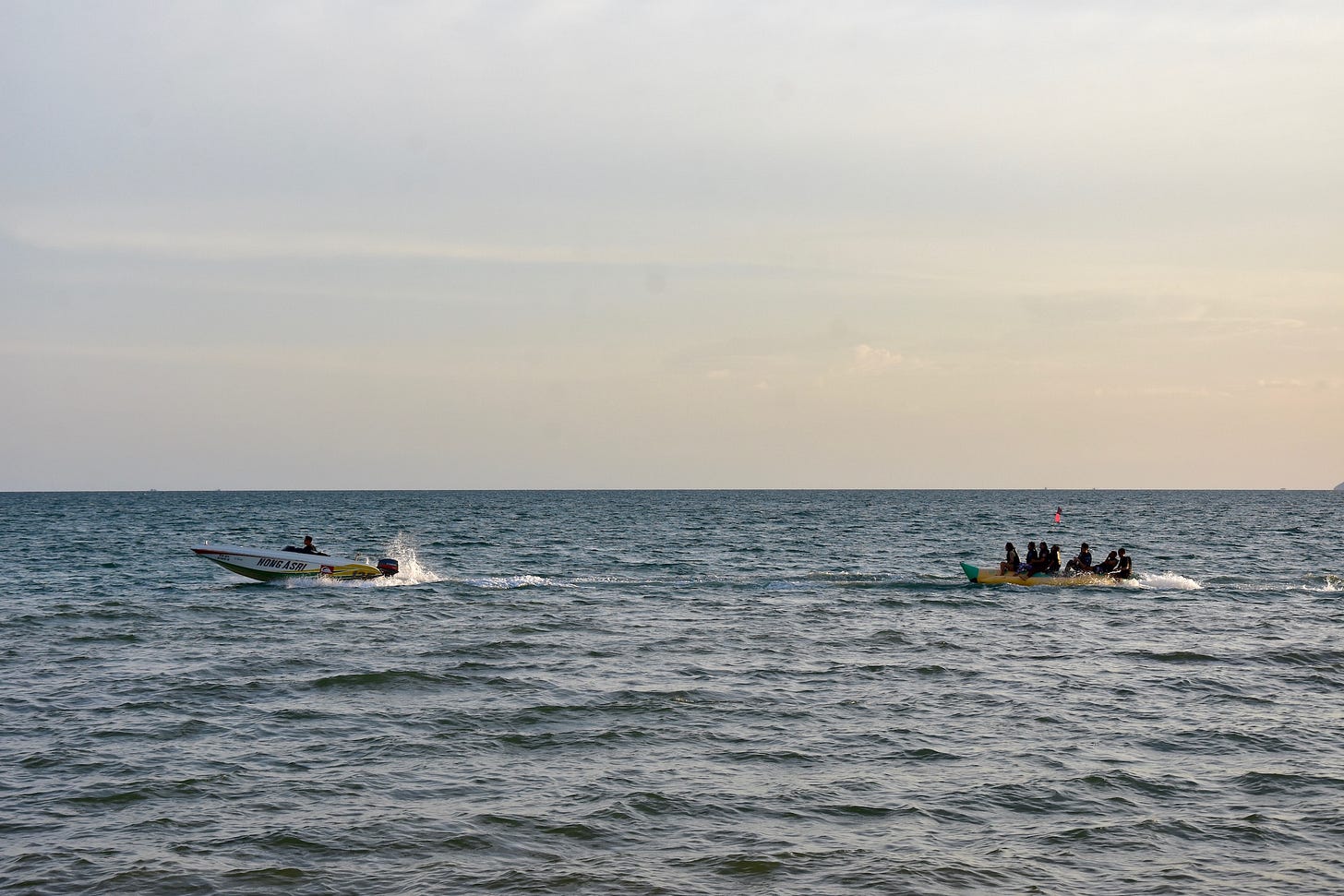
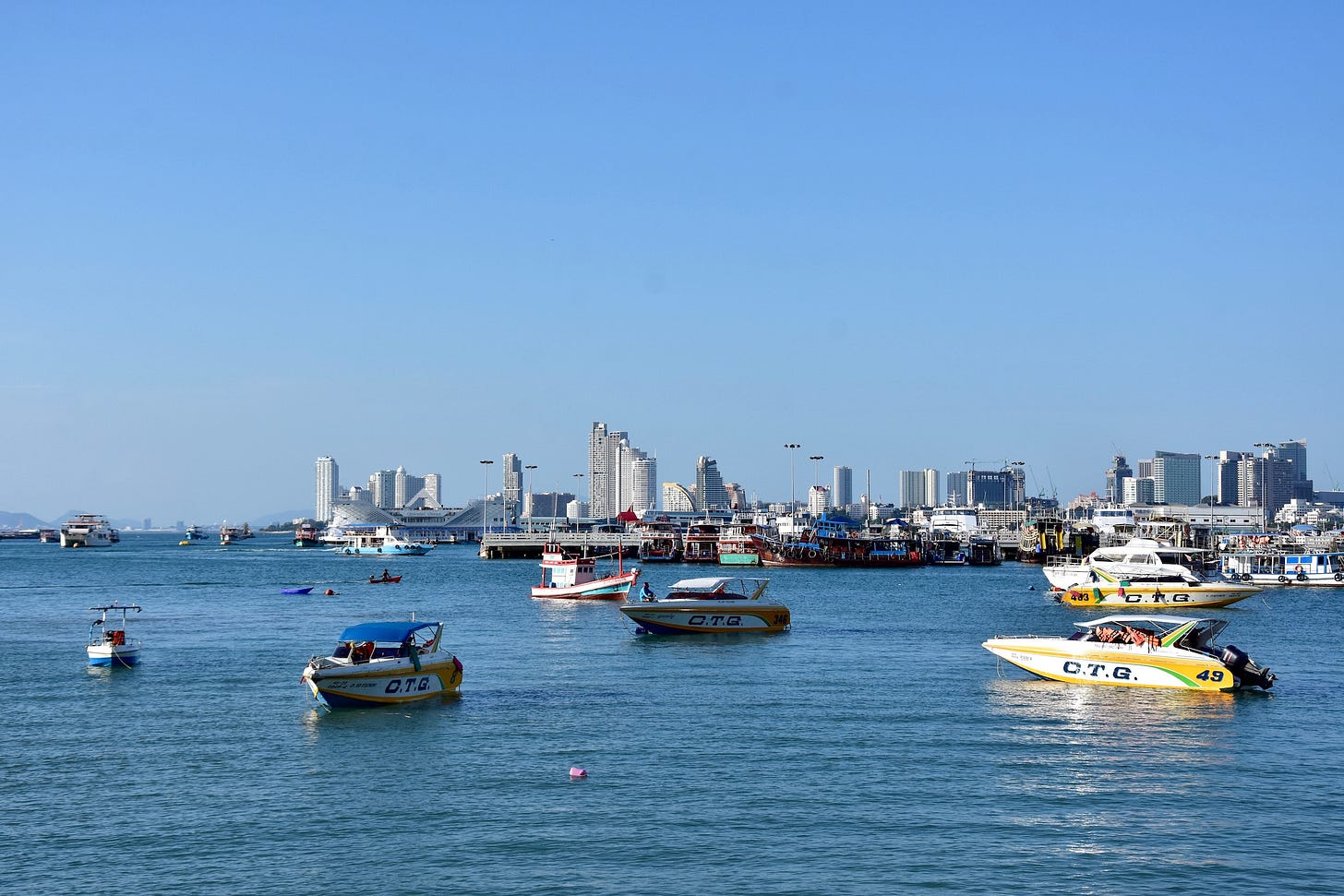

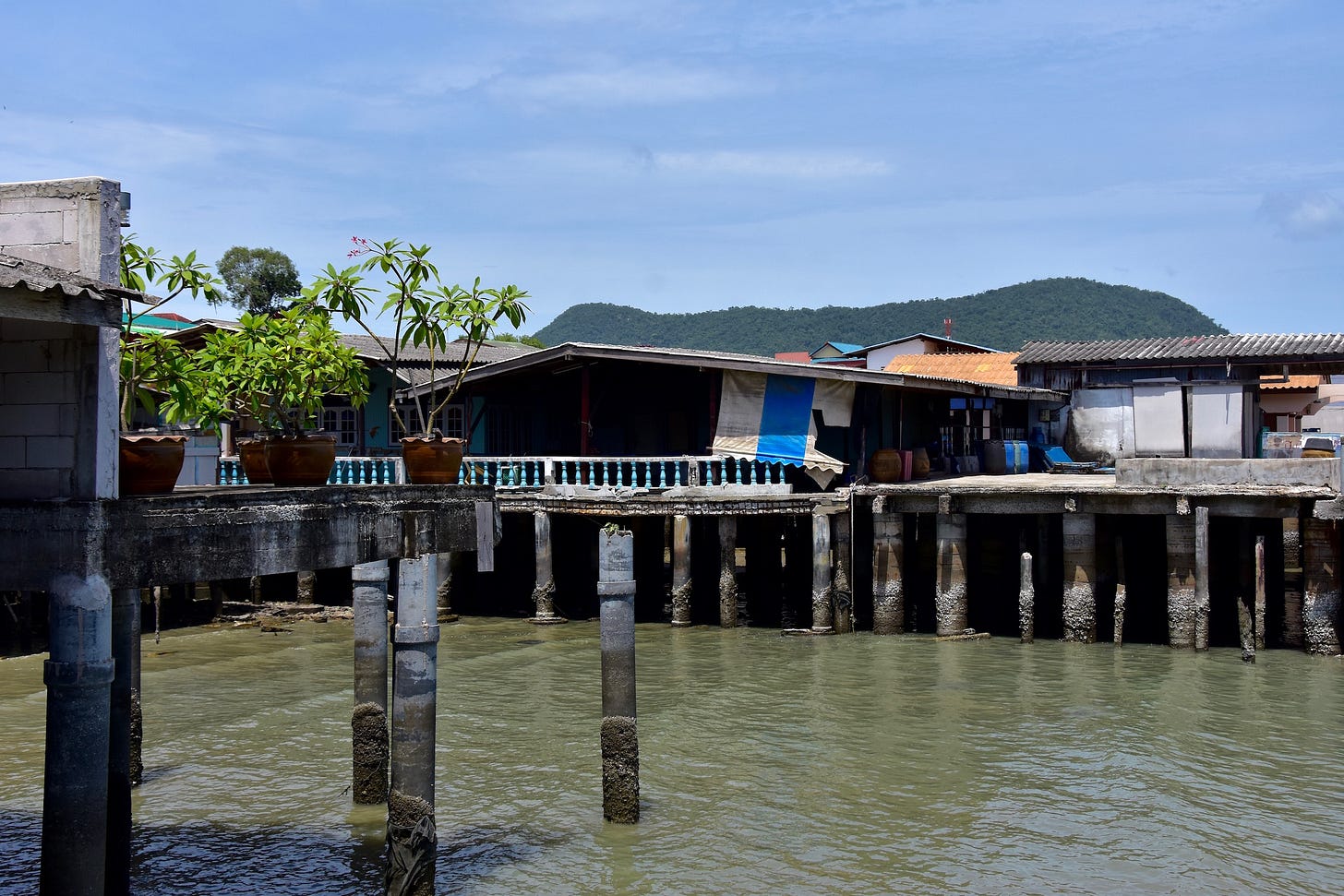
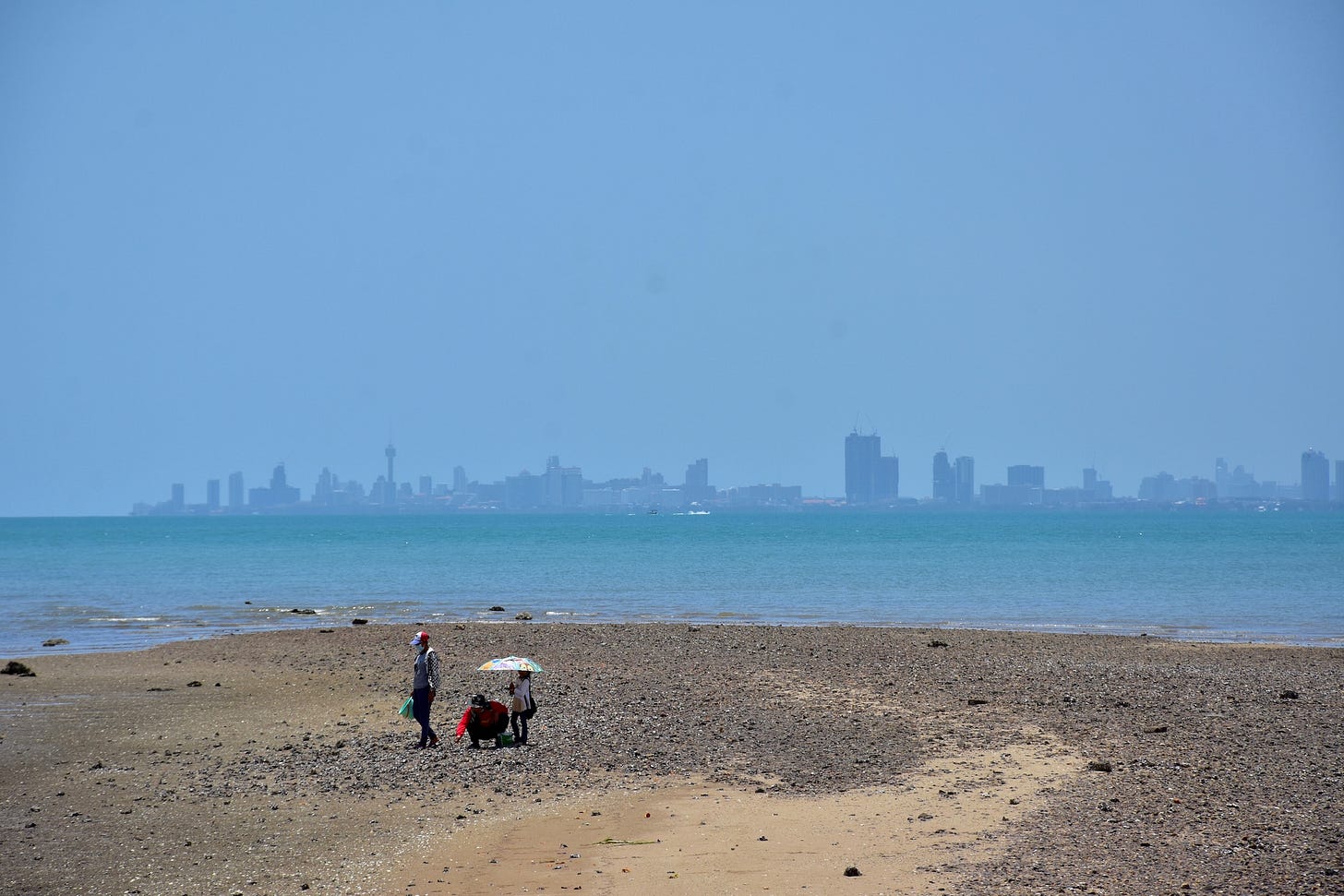
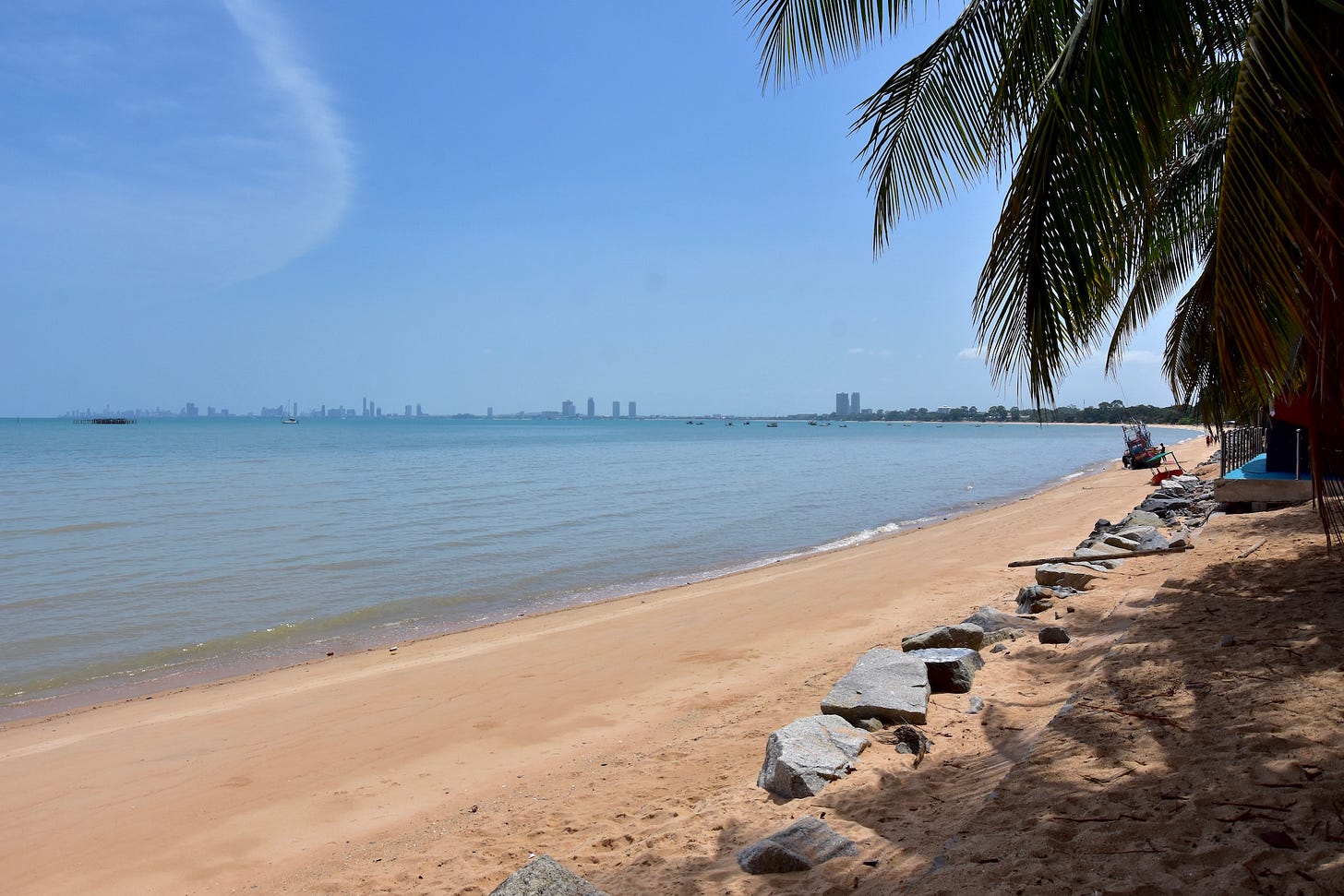
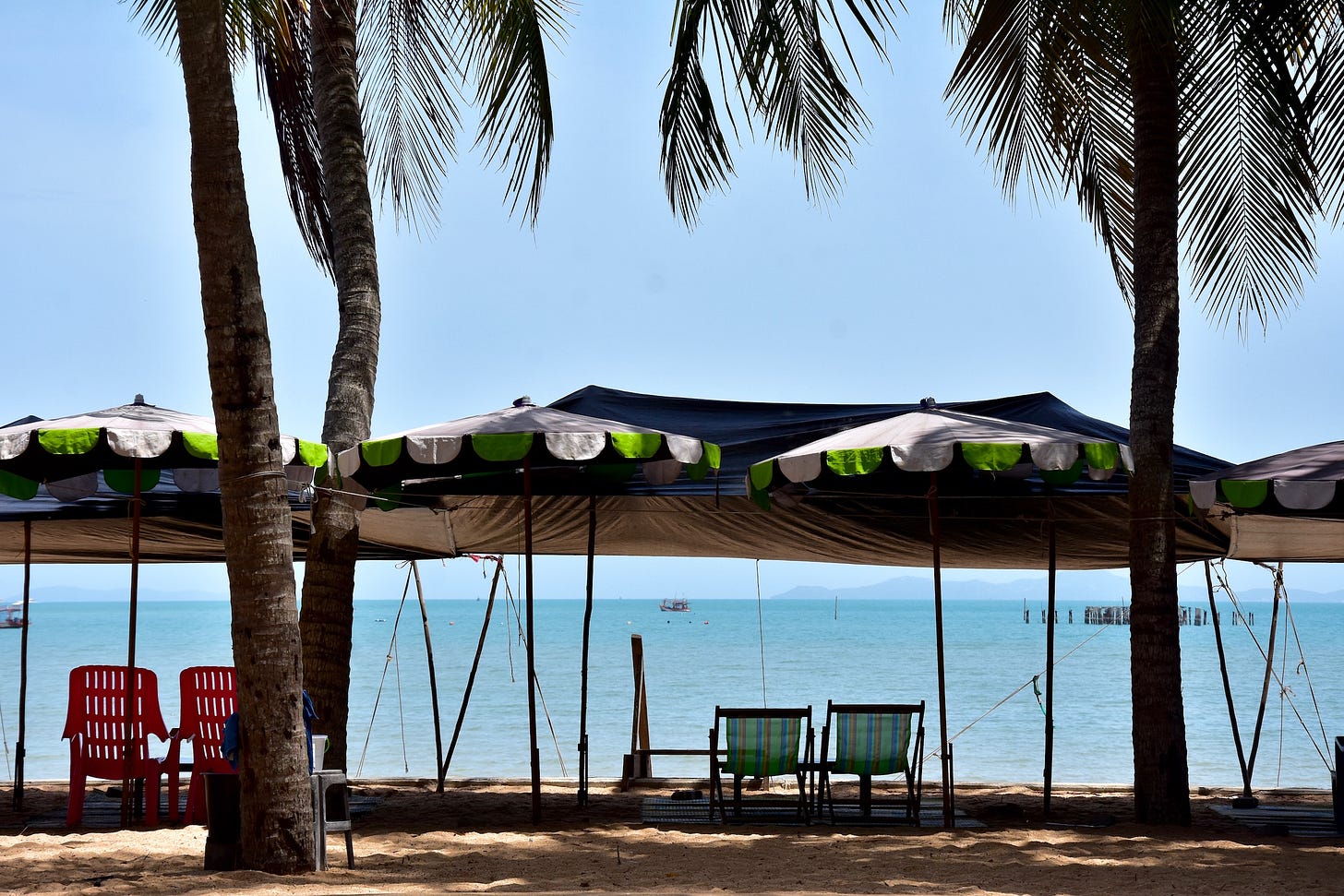
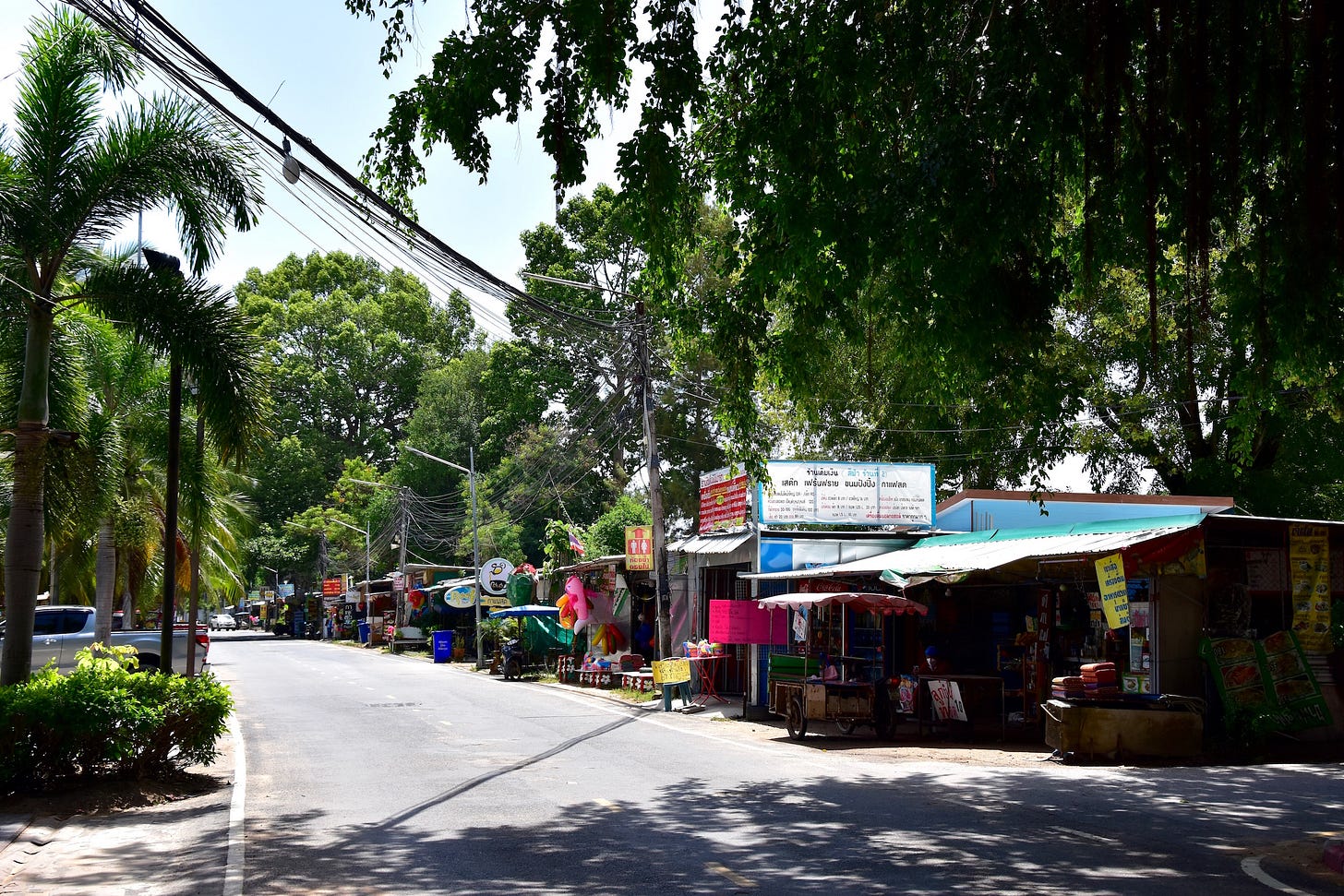
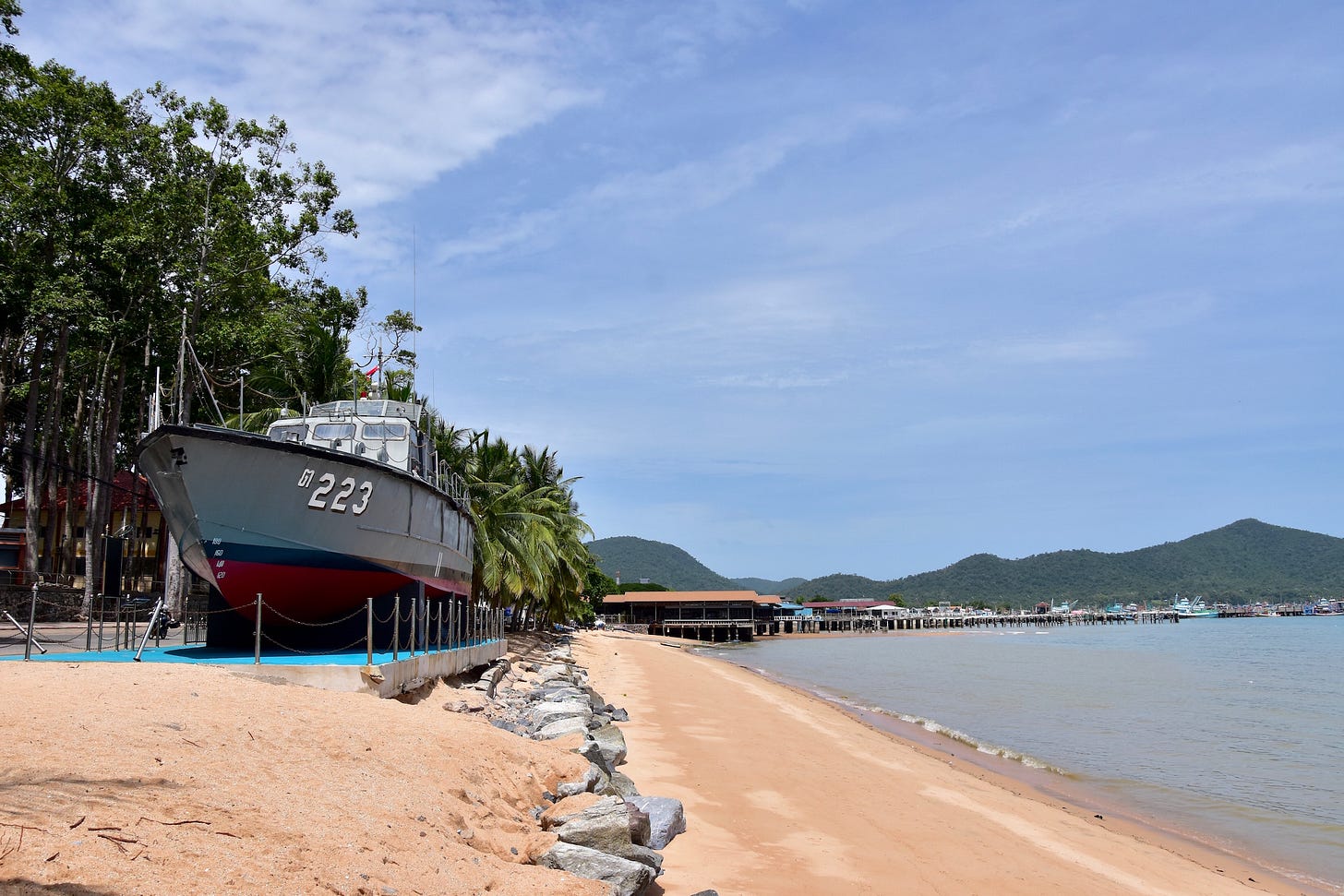
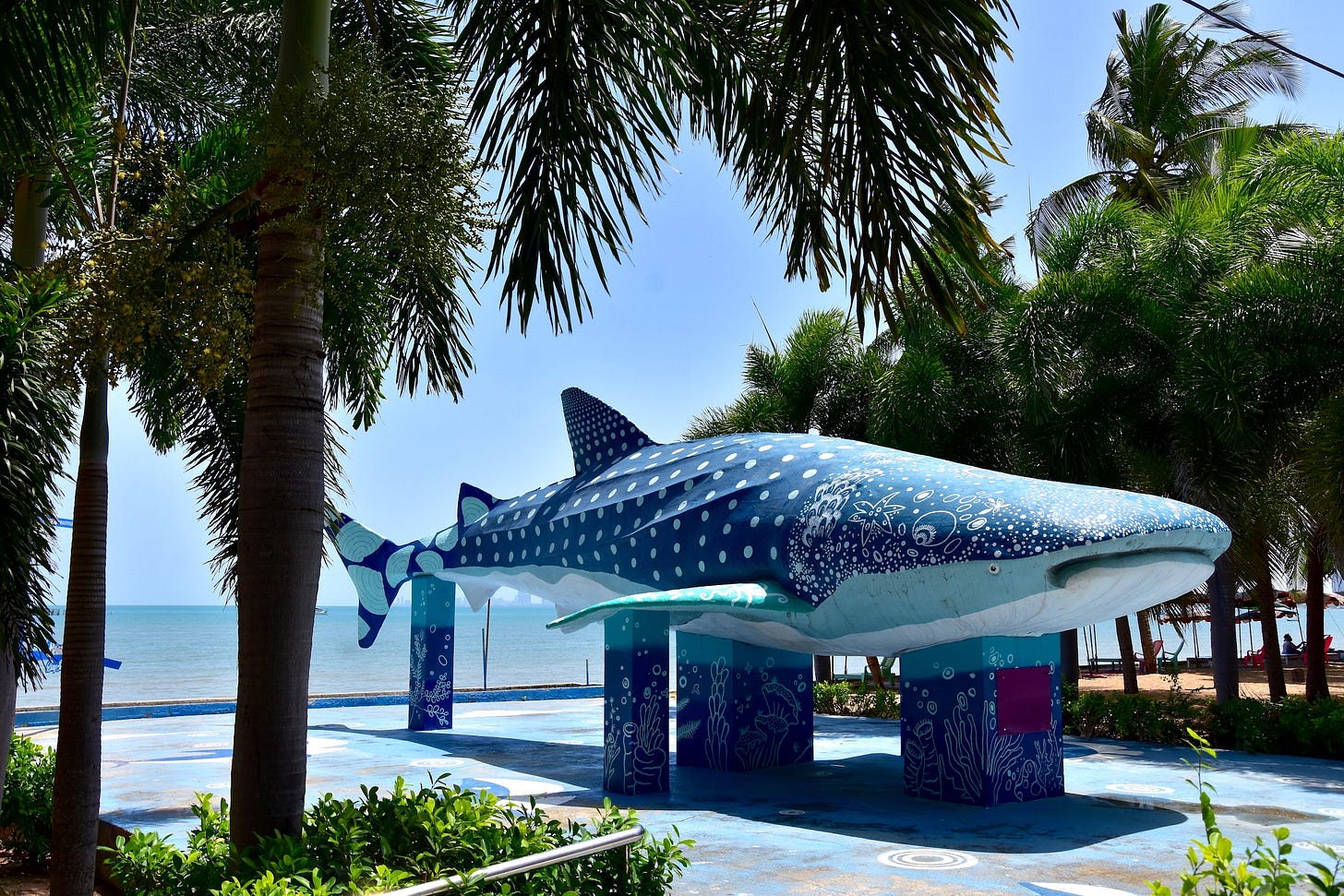
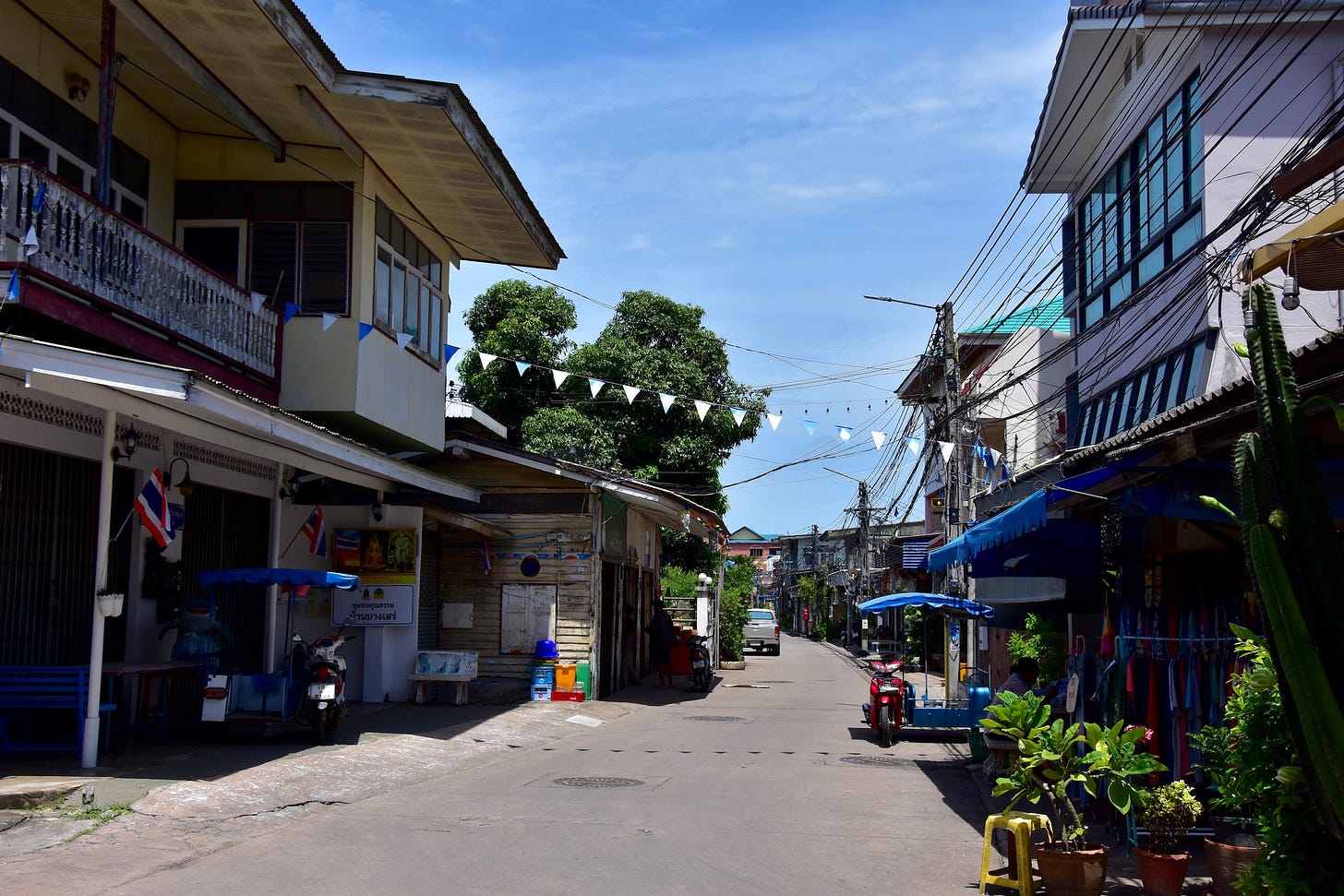
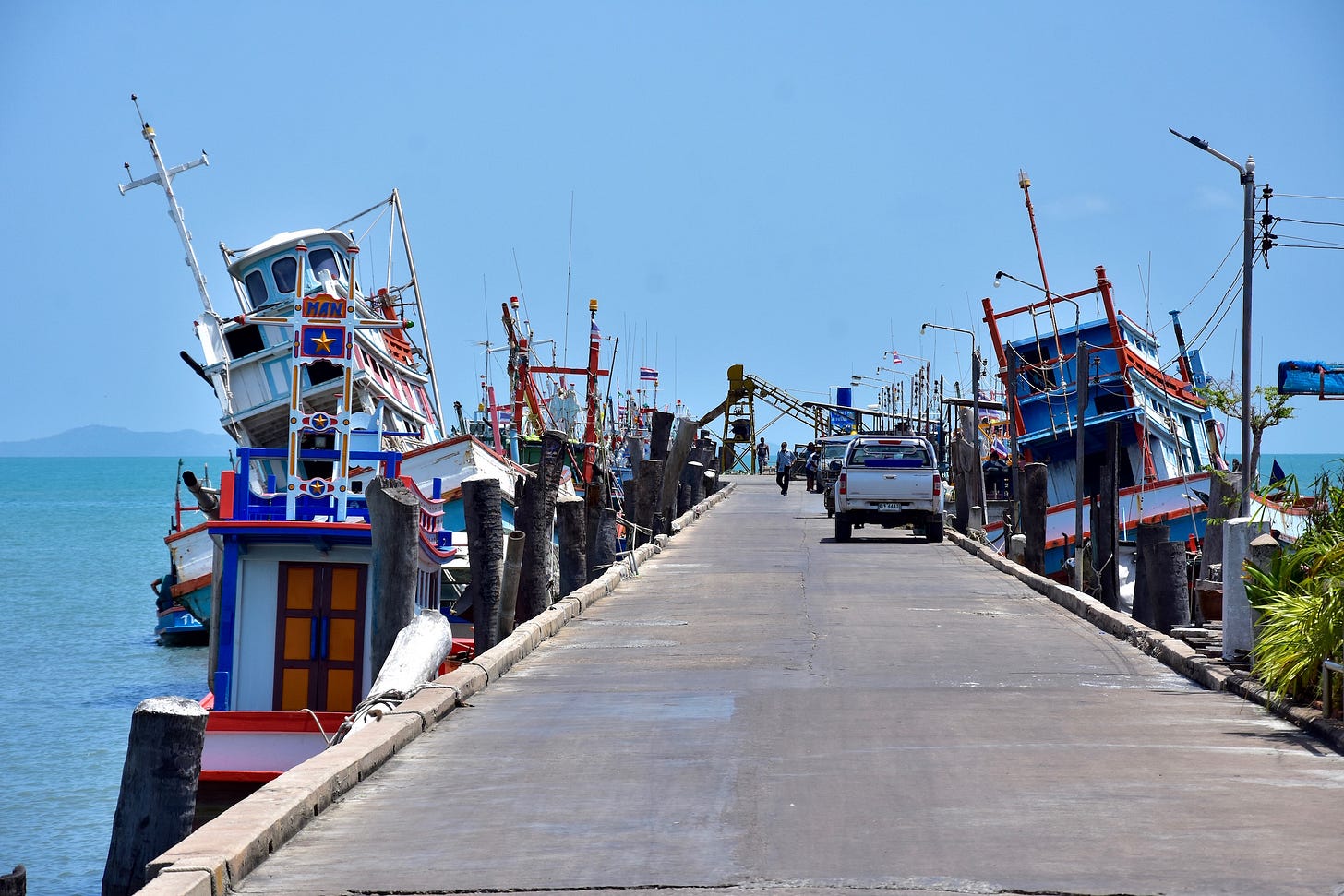

Bang Saray is no longer peace and quiet.
It's car stereos blasting on the beach road near the condos most evenings and into early mornings. Cops don't care. When your windows on the 24th floor shake from the bass on weeknights, it's beyond disruptive.
Man I have seen that picture before. Could have been taken anywhere but maybe it was taken in Pattaya. Is that it ? Show me some evidence. Real evidence. 500 guys came down from Korat. ? Where is the photographic proof.? Where are photos of service men VN era in Pattaya ? If they were there where's the evidence. ? There should be photos and footage. The guy who runs Pattaya Unlimited says he has seen little evidence of it. Again I swore black and blue that it was true until I learnt otherwise. It's an urban myth. I also have travel guides from that period. No mention of end. I enjoy your work man. Thankyou